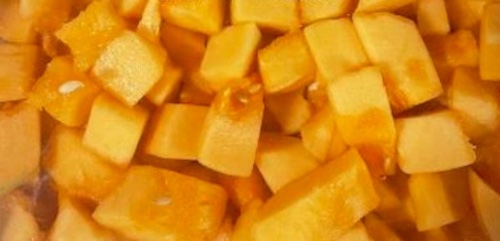Cantaloupe tied to a Salmonella outbreak that has caused hundreds of illnesses and eight deaths in the U.S. and Canada is likely “very highly contaminated,” April Hexemer, an epidemiologist and director of outbreak management with the Public Health Agency Canada told CBC News this week.
Cross-Contamination Risk
In addition to causing severe illness, highly contaminated food also poses a major risk of cross-contaminating other foods and surfaces. The Minnesota Department of Agriculture is one of the state agencies working with the U.S. Food and Drug Administration (FDA) on a “traceback” investigation tracing back the melons’ journey from store shelves to fields where they were grown. Minnesota is one of two states where fatalities have been reported in this outbreak. Oregon is the other.
Recalls for this outbreak include whole cantaloupe, packaged cantaloupe chunks and spears, fruit medleys, and fruit trays containing cantaloupe. In addition to whole melon and cantaloupe chunks, ALDI’s recall includes pineapple spears packaged without other fruit but produced by the cantaloupe supplier, indicating a cross-contamination risk.
Pet food contaminated with Salmonella often causes illness in humans who handle it or touch surfaces it has contacted. In 2018, dog food contaminated with Salmonella sickened two children in Minnesota, one of whom developed osteomyelitis.
Stuffed, breaded raw chicken products linked to a 2014 outbreak were so highly contaminated with Salmonella that it was difficult to safely prepare them. And preparation of those items required oven baking. With fresh fruits and vegetables, there is no “kill step” to cook off the germs.

Where Does Contamination Occur?
Contamination of a food product can occur where it is grown, packed, shipped, processed, or sold. Health officials have not yet determined where the contamination originated in this outbreak. Still, it’s clear there was a breakdown in the process somewhere, Attorney Raymond Trueblood, with the food safety law firm Pritzker Hageman which filed the first lawsuit in this outbreak, told the StarTribune. “So often, as disgusting as it sounds, ultimately the case is feces in our food.”
The melon linked to this outbreak was grown in Mexico, but U.S. outbreaks provide plenty of examples of how produce becomes tainted with bacteria.
For example, dozens of romaine E. coli outbreaks have been linked to contaminated cow manure that made its way to growing fields, often through runoff into irrigation water. And leafy greens are hardly alone in this threat.
Last week, the Environmental Working Group (EWG) released a study of cantaloupe growing fields in three California counties where it estimates about 40 percent of the nation’s cantaloupe is grown. Using geospatial data, EWG mapped cantaloupe farm locations in Fresno, Imperial, and Merced counties and measured their distance from industrial livestock operations or concentrated animal feeding operations (CAFOs).
The analysis found that 215 cantaloupe fields are located within a 3-mile buffer zone of these facilities. “One field in Mercer County is only five feet from an animal operation, so animal waste could very well seep into the irrigation water and get sprayed onto cantaloupe fields, or drift from the animal operation on dust to contaminate nearby fields,” the report states.
Another major cantaloupe-growing region, Southern Indiana, has a decade-long Salmonella problem due to the fields’ proximity to poultry operations. The number and diversity of Salmonella strains recovered from this area “may be indicative of robust human pathogen reservoirs which persist and circulate within this growing region,” an FDA report stated.
Produce can also become contaminated at processing plants. In 2016, a deadly Listeria outbreak was linked to salads produced at a Dole facility in Springfield, Ohio. The outbreak included 19 illnesses and one fatality in the U.S., and 14 illnesses and three fatalities in Canada, although Canadian health officials had not determined if Listeria was the cause of those deaths. All 33 patients were hospitalized, one of them was a pregnant woman.
CDC Advice
This outbreak has been associated with severe illness, especially among young children and people over 65, many of whom ate the tainted fruit at childcare centers or long-term care facilities. Most of the illnesses have been linked to cut cantaloupe
Because an unusually high number of people have been hospitalized, the Centers for Disease Control and Prevention (CDC) recommends that consumers avoid eating cut cantaloupe unless they know whether Malichita or Rudy brand melon was used.

If you have been sickened with a food poisoning infection, please contact our experienced attorneys for help with a possible lawsuit at 1-888-377-8900 or text us at 612-261-0856. Our firm represents clients in lawsuits against grocery stores, restaurants, and food processors, and families in wrongful death cases.




